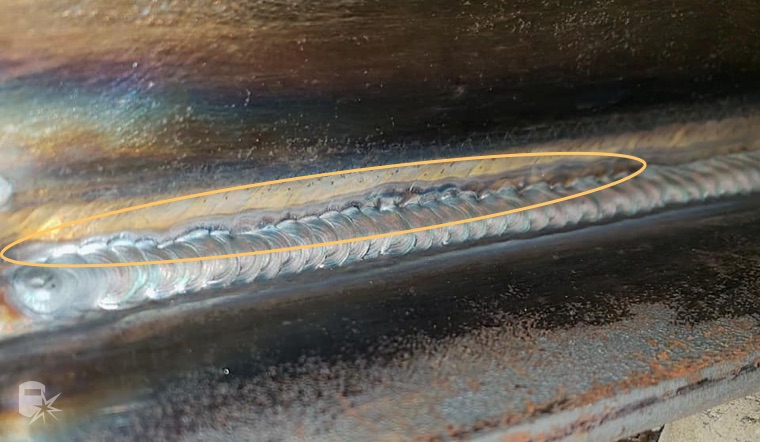Preventing Weld Undercut: Proven Techniques Every Welder Must Know
Preventing Weld Undercut: Proven Techniques Every Welder Must Know
Blog Article
Grasping the Art of Welding: How to Prevent Undercut Welding Issues for Flawless Construction Outcomes
Efficiency and precision are vital on the planet of welding, where even the slightest imperfection can compromise the architectural integrity of a produced item. One usual difficulty that welders face is damaging, a defect that can lead and damage a weld joint to costly rework. By comprehending the source of undercut welding and carrying out effective strategies to avoid it, welders can raise their craft to new levels of excellence (Preventing weld undercut). In the search of flawless construction outcomes, mastering the art of welding to avoid undercut issues is not simply an ability yet a need for those striving for excellence in their work.
Comprehending Undercut Welding

To stop undercut welding, welders must guarantee correct welding parameters, such as readjusting the current, voltage, traveling rate, and keeping the appropriate electrode angle. In addition, using the proper welding method for the particular joint setup is important. Utilizing weaving activities or backstepping techniques can help make certain proper weld metal deposition and minimize the chance of undercut formation. Regular inspection of welds during and after the welding procedure is additionally vital to catch any type of undercut very early and make required adjustments to stop further defects. Preventing weld undercut. By understanding the root causes of undercut welding and executing precautionary actions, welders can achieve high-quality, structurally sound welds.
Causes of Undercut in Welding
Recognizing the elements that contribute to undercut in welding is important for welders to generate high-quality, structurally sound welds. When the weld metal does not appropriately fill the groove formed in between the base steel and the formerly deposited weld steel, damaging takes place. A number of variables can result in undercut in welding. One common reason is excessive heat input. Welding at high temperature levels for prolonged durations can cause the base metal thawing greater than desired, causing undercut. Inadequate welding inaccurate or present welding speed can additionally contribute to damage. Not enough current may not supply enough heat to melt the base and filler steels sufficiently, while extreme rate can stop correct blend, triggering undercut. In addition, inappropriate electrode angles or incorrect torch manipulation strategies can produce locations of low weld steel deposition, advertising undercut. Recognizing these causes and carrying out appropriate welding strategies can aid prevent undercutting concerns, ensuring long lasting and solid welds.
Strategies to avoid Undercutting

To reduce the risk of undercutting in welding, welders can use critical welding strategies intended at improving the high quality and integrity of the weld joints. In addition, using the proper welding strategy for the certain joint setup, such as weave or stringer beads, can add to lowering damaging.
Utilizing back-step welding strategies and controlling the weld grain account can likewise help distribute warmth evenly and lessen the risk of undercut. Routine inspection of the weld joint throughout and after welding, as More hints well as implementing high quality guarantee measures, can help in addressing and finding damaging issues without delay.
Significance of Correct Welding Parameters
Selecting and preserving proper welding criteria is crucial for achieving successful welds with very little flaws. Welding criteria describe variables such as voltage, current, travel rate, electrode angle, and securing gas circulation price that straight impact the welding process. These specifications need to be meticulously readjusted based upon the kind of material being welded, its thickness, and the welding technique utilized.
Appropriate welding specifications ensure the appropriate amount of warmth is related to thaw the base steels and filler product evenly. If the criteria are established also high, it can bring about extreme warmth input, creating burn-through, spatter, or distortion. On the various other hand, if the specifications are as well low, incomplete fusion, lack of infiltration, or damaging may happen.
Quality Control in Welding Workflow

Verdict
In verdict, mastering the art of welding requires a detailed understanding of undercut welding, its reasons, and methods to avoid it. By guaranteeing correct welding parameters and implementing quality control techniques, flawless construction outcomes can be accomplished. It is necessary for welders to regularly pursue quality in their welding operations to stay clear of undercut issues and create premium welds.
Undercut welding, a common flaw in welding processes, happens when the weld metal does not appropriately fill the groove and leaves a groove or clinical depression along the welded joint.To protect against undercut welding, welders ought to make certain proper welding criteria, such as changing the existing, voltage, travel rate, and maintaining the right electrode angle. Poor welding inaccurate or existing welding speed can likewise add to damage.To reduce the threat of undercutting in welding, welders can utilize critical welding techniques intended at boosting the quality and stability of the weld joints.In conclusion, grasping the art of welding calls for an extensive understanding of undercut welding, its reasons, and methods to prevent it.
Report this page